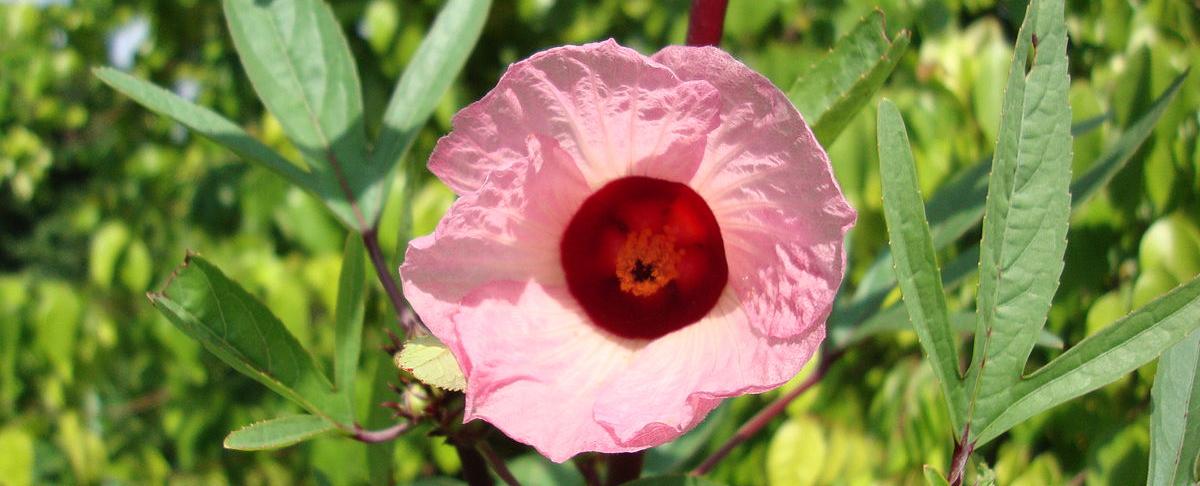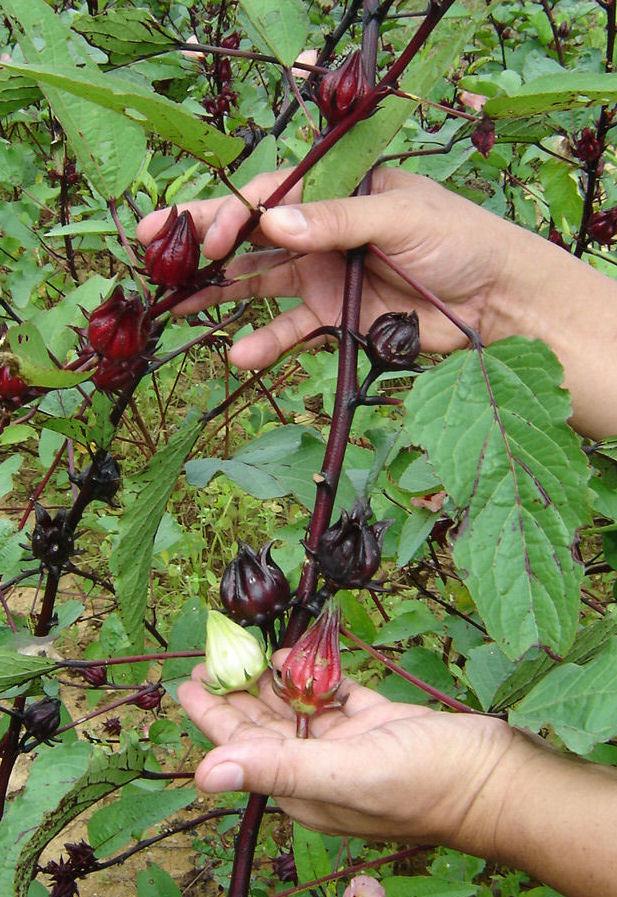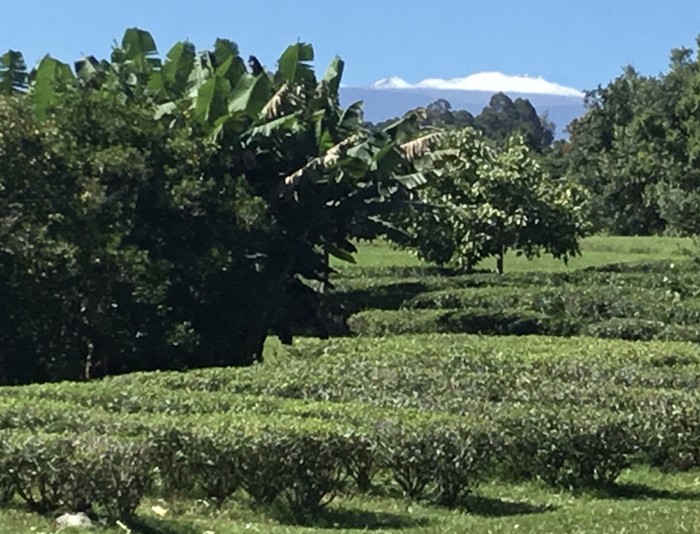6 Health Benefits of Hibiscus Tea Your Body Will Thank You For
Hibiscus Tea is Refreshing and Packed with Health Benefits
Summer is officially here and June is National Iced Tea Month, the perfect time to introduce hibiscus tea since it is both thirst quenching and offers myriad health benefits. Hibiscus tea is an herbal infusion, is naturally caffeine and calorie free, and can be served iced or hot. Among the reasons we reach for this tea on hot summer days is because it satisfies thirst without added sugar or sweeteners, has a cooling effect on the body, and reduces narrowing of the airways (bronchoconstriction), allowing us to fully breathe in those fragrant summer breezes here on the tea farm. The tea has a beautiful red color and its mild and slightly tart flavor reminds one of cranberries.
In addition to its refreshing nature, emerging science indicates hibiscus tea possesses some of the same beneficial polyphenols and other antioxidants as green tea and also contains beneficial novel compounds not found in other plants. Hibiscus is rich in vitamin C, contains minerals such as iron, and offers antioxidants like anthocyanin and protocatechuic acid (PCA).
Other names for hibiscus tea include roselle, sour tea, aqua de Jamaica in Mexico and Central America, sorrel in the Caribbean, and bissap in West Africa.
Although botanists have counted up to 200 different species of hibiscus, Hibiscus sabdariffa is by far the most common flower used for tea. The part of the hibiscus plant responsible for protecting and supporting the flower is the calyx. These dried calyces are used to make hibiscus tea. Until recently, we traveled to Sudan to source our Hibiscus sabdariffa calyces. We now grow our own organic plants right here on our tea farm located on the Big Island of Hawai’i. We have two 2 varieties of hibiscus tea in our shop: plain hibiscus calyces by themselves and Hawaiian Paradise, our healthy version of Hawaiian Punch, which contains Hibiscus sabdariffa, pineapple,and coconut.
The 6 main health benefits of hibiscus tea we want you to know about are:
The History of Hibiscus Tea
Botanists believe Hibiscus sabdariffa originated in Sudan or West Africa and was first cultivated there around 6000 years ago. Hibiscus was originally used in West Africa as a food and beverage, with the calyces and leaves appearing in many traditional dishes. From Africa, the plant was taken to India and eventually made it to the Americas in the 1800s. Today, this woody bush known for its brilliant yellow flowers with a deep red center grows in tropical and subtropical climates around the world. Along with its use as an ornamental shrub, for cooking and tea, and in traditional medicine, it is cultivated as a source of fiber used in textiles and rope.
Hibiscus Tea Health Benefits
Hibiscus Tea in Folk Medicine
Few herbal teas possess the rich history and world renown as Hibiscus sabdariffa, as it has been used for thousands of years in various cultures around the globe. Many claims have been made about its ability to help with sleep, speed up metabolism, and even calm nervous disorders. Pulp from the plant has been used topically to care for wounds.
Sudanese, Egyptian, and North African folk medicine utilizes hibiscus to lower body temperature, promote heart health, and for its diuretic purposes. Other regions of Africa use hibiscus to fight bacteria, soothe sore throats, ease muscle spasms, and expel worms and other parasites. A topical paste or salve is applied to wounds to prevent infection.
In Iran, hibiscus is a traditional treatment for lowering cholesterol and high blood pressure.
Traditional Chinese medicine uses hibiscus to treat the kidney meridian since it is considered sour and cooling. Uses include lowering body heat, increasing appetite, and for its anti-inflammatory, antibacterial, and diuretic properties.
In Mexico and Central America, hibiscus tea is drank to aid digestion and increase bile production. In large amounts, hibiscus tea works as a laxative, and it is utilized for such purpose in this region.
For Europeans, hibiscus is popular for treating hangovers through its ability to reduce the absorption of alcohol, protect the liver, manage cholesterol, and lower blood pressure.
Recent research studies support many of the folk medicine claims from around the world. The most scientifically studied health benefits of Hibiscus sabdariffa are its ability to reduce blood pressure and cholesterol and prevent cardiovascular disease. Please understand that while we want to share the promising information from these studies, we urge you to consult your physician before undertaking any changes to your medical treatments.
Hibiscus Tea Lowers High Blood Pressure
Multiple published studies and meta-analysis of studies in the last 20 years found consuming hibiscus tea lowered blood pressure in people at risk of high blood pressure and those with mildly high blood pressure. Dramatic improvement has resulted from drinking only 3 cups of tea daily over a few weeks, with significant lowering of both systolic and diastolic blood pressure.
The ability of hibiscus tea to lower blood pressure might be the result of its flavonoid or phytochemical content, although this is not known for sure. Hibiscus tea is rich in anthocyanin, a naturally-occurring chemical responsible for giving berries their color, and many believe this compound provides the tea with its heart-healthy effects. Researchers added that tea made from Hibiscus sabdariffa is high in organic acids, polyphenols, polysaccharides, and volatile constituents beneficial for heart health.
Hibiscus tea also works as a natural diuretic, which increases both urination and bowel movements, further reducing blood pressure since water leaving the body carries sodium with it.
Hibiscus Tea Lowers Cholesterol
Published studies have indicated drinking hibiscus tea has a positive effect on cholesterol levels, lowering bad LDL cholesterol and triglyceride levels as well as increasing good HDL cholesterol levels. By lowering bad LDL cholesterol, the tea helps defend against heart disease and blood vessel damage.
Researchers have noted hibiscus tea might be more effective in people with type-II diabetes and related conditions compared to healthy people. For those with diabetes, the lowering of cholesterol, triglycerides,and low-density lipoprotein cholesterol helps manage their condition.
In addition to the heart-healthy benefits of lowering cholesterol and blood pressure, studies suggest regular drinking of hibiscus tea can reduce the risk of stroke and heart attack.
Hibiscus Tea Helps Weight Loss
Various studies have shown hibiscus consumption has a positive effect on managing body weight with a lower body mass index (BMI),body fat, and hip-to-waist ratio. Hibiscus tea works in a variety of ways to achieve these results.
By lowering cholesterol and triglycerides, tea from Hibiscus sabdariffa helps reduce the risk of obesity. It significantly reduces body weight gain in those suffering from obesity.
Hibiscus sabdariffa, according to cell, animal, and human studies, appears to aid the body in burning calories faster by supporting a healthier metabolism. This is especially evident when it comes to the metabolism of sugars and other carbohydrates as hibiscus has been shown to decrease the synthesis of amylase, an enzyme that speeds up the breakdown of starch into sugars. Drinking a cup of hibiscus tea after a meal assists in weight loss by reducing the absorption of those delicious and fattening carbohydrates, allowing you to also shed guilt when you go for another serving of pasta. Scientists believe these effects can be attributed to the high levels of polyphenols and flavonoids found in hibiscus tea, such as beta carotene and PCA. In addition, hibiscus tea contains catechins like EGCG that are found in green tea.
The anti-inflammatory characteristics of hibiscus tea also keeps cortisol (the stress hormone), which contributes to fat storage, in check.
Hibiscus is Loaded with Antioxidants
Hibiscus tea is an amazing source of antioxidants, which help reduce free radicals and the oxidative stress they cause when they invade our bodies and we do not have enough antioxidants to fight them off. Various studies have shown links between free radical damage and a range of health issues including cancer, dementia, diabetes, cardiovascular disease, and aging skin. The high concentration of antioxidants in hibiscus tea may help slow these processes, reduce inflammation and keep skin looking young.
A surprising fact is hibiscus tea is higher in oxygen radical absorbency capacity (ORAC), a lab test measuring the total antioxidant capacity of a food or drink, than some matcha, which many believe is the most potent tea when it comes to antioxidants. Hibiscus tea contained ORAC values twice as high as the matcha tested.
Hibiscus tea contains three main antioxidants: anthocyanins, PCA, and quercetin glucoside.
High concentrations of red flavonoid pigment in anthocyanins have a direct correlation to its antioxidant effects, making that deep red color of hibiscus tea both visually appealing and a health benefit.
PCA is a strong antioxidant and anti-inflammatory associated with liver protection. It has also been shown to have success inhibiting the growth of lung cancer cells and inducing cell death of human leukemia cells.
Quercetin has antioxidant and anti-inflammatory properties and has shown promise preventing heart disease, killing cancer cells, and reducing blood sugar.
Hibiscus sabdariffa is a natural source of alpha hydroxyl acid (AHA), which is used in anti-aging products, with the benefits muscle tightening and strengthening of cells to help smooth fine lines and wrinkles. Just remember the red pigment of Hibiscus sabdariffa before you start rubbing it on your face.
Hibiscus Tea Supports a Healthy Immune System
Hibiscus tea is an excellent boost to the immune system because it contains high levels of ascorbic acid, which is better known as vitamin C. Vitamin C keeps the immune system strong and healthy by aiding in the production of white blood cells, which fight off pathogens in our bodies. Vitamin C also benefits the nervous system, benefits blood flow, and increases the health of tissues and skin.
Another immune system benefit of hibiscus tea is the high level of iron, with one cup having a surprising 20 milligrams of iron, a mineral that helps oxygen-delivering red blood cells and balances the immune system. The vitamin C in Hibiscus sabdariffa helps increase iron absorption, which benefits those suffering from anemia. In addition to iron, hibiscus tea also contains other minerals such as potassium, zinc, and magnesium.
Hibiscus sabdariffa has also shown antifungal and antimicrobial properties inhibiting the yeast formation of Candida albicans and bacteria such a E. coli (Escherichia coli).
Hibiscus Tea Supports Kidney Health
You may have noticed hibiscus tea and green tea share several health benefits and researchers have taken notice as well. A recent study comparing Hibiscus sabdariffa and Camellia sinesis leaves found both plants show promise supporting the kidney health of hospital patients. Another study of people with mild to moderate hypertension found hibiscus tea helped support healthy kidney function.
A number of studies reported a decrease in the negative effects of alcohol from drinking hibiscus tea, since it reduces the absorption of alcohol. So, you might want to drink a cup of hibiscus tea after a long night out to ease any potential hangovers.
Another study found drinking hibiscus tea may prevent kidney stones, those painful stones that are difficult to remove from the body. Kidney stones result from a buildup of calcium oxalates in the urine and the anti-urolithiatic properties of Hibiscus sabdariffa can aid in their prevention.
With all of these benefits of 🌺 hibiscus tea, grab a cup ☕ for National Iced Tea Month.
If you tag us in a social media post ( @ancientleaf on Instagram and @ancientleaftea on Facebook) of you drinking hibiscus tea, we’ll reach out to send you a coupon for your next purchase of our organically grown 🌺 hibiscus tea! BONUS: FIRST 5 to share this post and tag us - Will also receive a FREE 1/2 GALLON HAWAIIAN PARADISE ICED TEA PACK .






